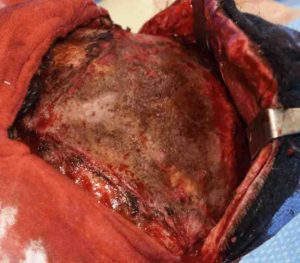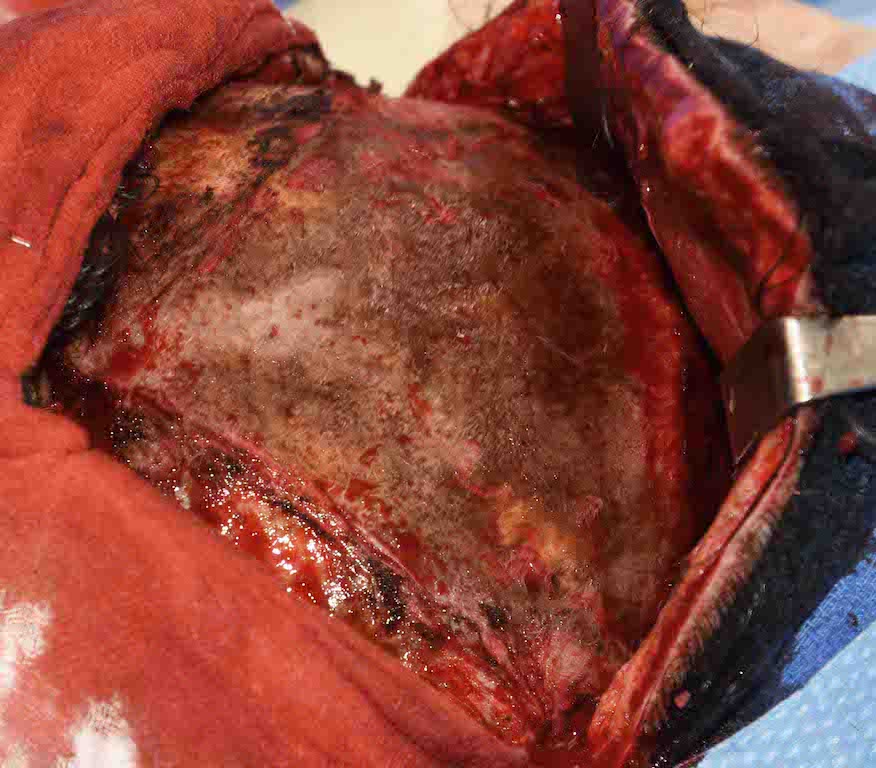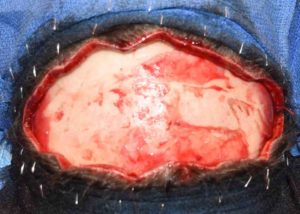Human bones are well known to have a white color. This is seen as more white on skeletal models than in a live person where it is often more of an off white, grey white and rarely an off white with a yellowish hue. Such bone coloration comes from its calcium phosphate content which refracts the entire spectrum of light generating its whitish color.

The most common culprit for bone discoloration is the antibiotic drug, minocycline. Chronic use is known to be associated with causing abnormal pigmentation of bone. This discoloration can range from yellow, yellow-green, gray, brown and black colorations. This has been called drug-induced Black Bone disease. There are also other cases including metabolic bone diseases, metal deposits and ochronosis. This should not be confused with the other Black Bone Disease, also known medically as Alkaptonuria, a congenital disease in which homogentisic acid builds up which attacks bone turning it black and making it brittle. Drug-induced Black Bone Disease may look unsavory but the bone has normal thickness, strength and will heal uneventfully.
Dr. Barry Eppley
Indianapolis, Indiana




